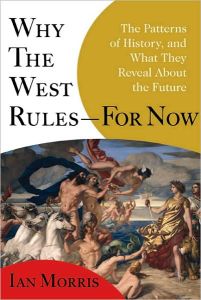Join getAbstract to access the summary!

Join getAbstract to access the summary!
Ian Morris
Why the West Rules – for Now
The Patterns of History, and What They Reveal About the Future
FSG, 2010
What's inside?
What forces allowed Western civilization to overtake Eastern civilization, and why this critical balance may tip.
Recommendation
This panoramic history offers formidable reading about the comparative development of Western and Eastern civilizations. It catalogs significant archeological, scientific and political events of 16,000 years of human history and several millennia in the life of the planet. Historian Ian Morris explains the forces that allowed Western civilization to overtake Eastern civilization and why this critical balance may now be tipping in favor of the East. This is high-quality academic scholarship: an interdisciplinary analysis, tying together esoteric facts and maps spanning geography, historical theories, paleontology, climatology, archeology and politics. Morris’s book supports his detailed “index of social development” model comparing the evolution of Eastern and Western civilizations. His construct relies on recounting detailed history, analysis and comparisons. This can be challenging reading, albeit leavened by Morris’s visible scholarship and entertaining style. You have to want to finish this book, but if you are a serious reader of history, getAbstract assures you that the effort has very substantial rewards – and if you are building up your ambitions it also makes for fascinating skimming.
Summary
About the Author
Ian Morris teaches classics and history at Stanford University, where he is an Archeology Centre fellow. His books include The Greeks and The Dynamics of Ancient Empires.





















Comment on this summary